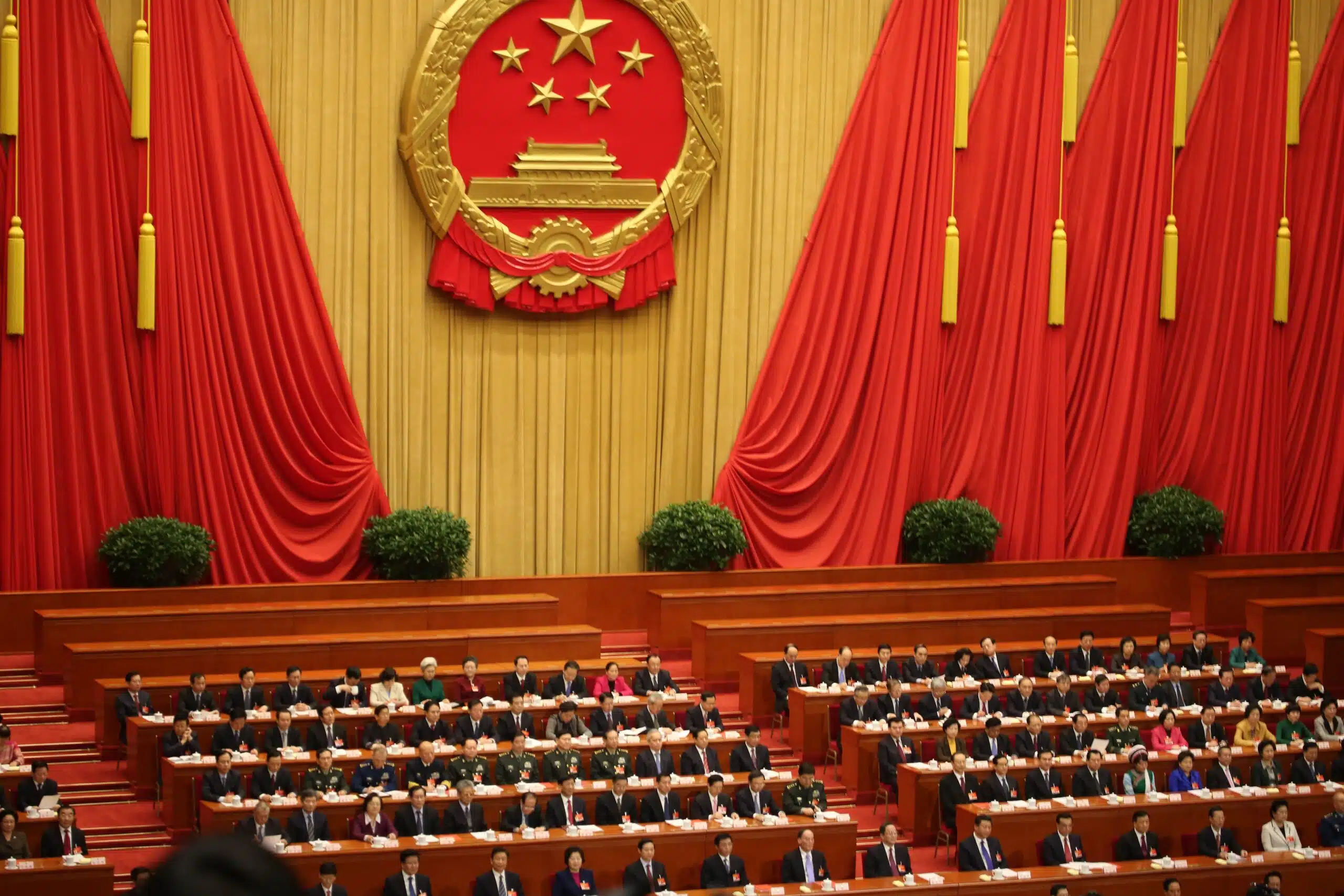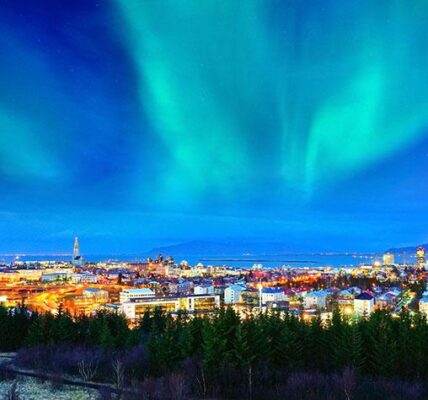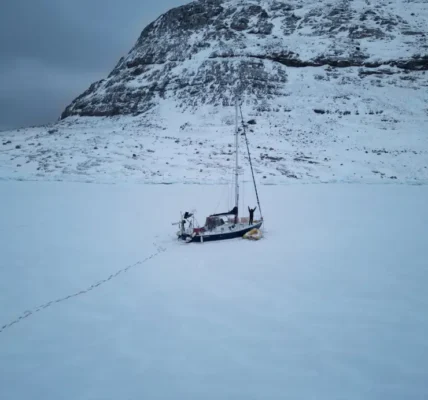In March 2021, during the annual session of the National People’s Congress in Beijing, the Chinese leadership formally adopted the 14th Five-Year Plan,1) marking the first time that one of China’s five-year plans directly mentions the Arctic.2) The plan, cumbersomely titled the 14th Five-Year Plan for Economic and Social Development and Long-range Objectives Through the Year 2035, acts as a blueprint for the country’s development until 2025, and reading it gives some insight into Beijing’s evolving view of the Arctic region.
China’s five-year plans serve as comprehensive guidelines for the country’s political economy. Once adopted by the National Congress, they serve as roadmaps, guiding economic development in five-year increments. Over time, these plans have evolved to become more than just mega-industrial policies and reams of rigid production quotas, however. China’s five-year plans now run the gamut from elderly care to quantum computing, and winter sports to global governance—the latter a reflection of Beijing’s increasingly global interests.
This is also the case for the Arctic. In Chapter 33 (“Actively expand the developmental space of the marine economy”) of the current plan, the region appears in a paragraph outlining how China will move to strengthen its participation in global ocean governance going forward:
[China will] actively develop blue partnerships; deepen participation in international ocean governance mechanisms and the formulation and implementation of relevant rules; promote the construction of a just and reasonable international maritime order; promote the creation of a maritime community with a shared future; deepen practical cooperation with coastal countries in the fields of marine environmental monitoring and protection, scientific research, and maritime search and rescue; and strengthen the investigation and evaluation of strategic resources and biodiversity in the deep sea; participate in practical cooperation in the Arctic and build the “Polar Silk Road”; improve the ability to participate in the protection and utilization of the Antarctic; strengthen situational assessments, risk prevention, and legal struggle; strengthen the construction of maritime law, resolutely safeguard national maritime rights and interests, and promote the legislation of basic maritime law in an orderly manner.3)
It is important not to overstate the significance of the Arctic’s inclusion in the current five-year plan, however. The 148-page-long document affords only a single sentence to the region. Rather, what is significant is the context in which the Arctic appears in the plan. The Arctic showing up in a section on maritime governance and marine economic development signals a geopolitical vision of the region centered around its high seas area and its marine resources, matching earlier observations that Beijing sees the Arctic largely in the context of ocean governance.4)
Beijing has in recent years begun to articulate more clearly its own vision of the global commons, at least domestically. In the 13th Five-Year Plan, Chapter 52 (“Actively participate in global economic governance”) called for China to “take part in the formulation of international rules for domains such as cyberspace, the deep-sea bed, the polar regions, and outer space”.5) This was the closest the plan came to mentioning the Arctic in a foreign policy context. These domains, which include the Arctic high seas, have been identified as a set of “strategic new frontiers”—geo-strategically important spaces, or domains, beyond the sovereign jurisdiction of individual states, characterized by competition over rights and resources, and where international norms are currently in flux or have yet to be established.6)
The domestic discourse on ocean governance too has evolved since the previous five-year plan. The 13th Five-Year Plan mentioned ocean governance largely in the context of safeguarding China’s near-seas interests, with a focus on developing the country’s blue economy. While it called for the country’s maritime actors to “Actively participate in the establishment and maintenance of international and regional maritime order,” this was linked to the goal to “improve the mechanism of maritime dialogue and cooperation with neighboring countries”.7) The plan adopted in 2021, in contrast, appears more outward-looking, emphasizing China’s role in shaping ocean governance globally, evidenced by the excerpt cited above. This image of China stepping up as an international norm-shaper, within maritime governance or elsewhere, is repeated in other sections of the newly adopted plan as well: Chapter 42 (“Actively participate in the construction and reform of the global governance system”), calls for nudging the global governance system in a more “equitable and rational direction,” and to “nurture a friendly external environment” through the use of both bilateral and multilateral diplomacy.8)
The appearance of the Polar Silk Road is notable, too. Although it is commonly thought of as the Arctic component of the Belt and Road Initiative—Beijing’s nearly globe-spanning infrastructure development strategy that now seems, at least rhetorically, to have taken a backseat to the more sterile-sounding Global Development Initiative9)—a later chapter in the plan dedicated specifically to the Belt and Road leaves the northern leg of this initiative out entirely. In Chapter 41 (“Promote the high-quality development of the Belt and Road Initiative”), other parts of the Belt and Road, such as the “Green Silk Road,” the “Digital Silk Road,” the “Aerial Silk Road,” and the “Health Silk Road,” all make appearances.10) The Polar Silk Road is instead filed under the aforementioned section on ocean governance; again, suggesting how Beijing views the Arctic less as a conventional region into which its state-owned companies can pump capital and launch infrastructure projects and more as a maritime space with a still-emerging governance architecture. The inclusion of the Polar Silk Road in the 14th Five-Year Plan also harkens back to when the Arctic was first formally incorporated into Beijing’s Belt and Road Initiative in the “Vision for Maritime Cooperation under the Belt and Road Initiative” document in 2017, which framed the Arctic as a maritime corridor, placing emphasis on shipping and resources development.11)
Some have noted how economic interests in the polar regions figure more prominently in the current five-year plan.12) However, earlier five-year plans did not shy away from encouraging developing polar resources. The 12th Five-Year Plan for the Development of the Maritime Economy, adopted in 2011, for example, called for the development of “satellite technology for developing and utilizing polar resources,”13) and urged the country’s polar research community to “steadily promote the exploitation of polar marine resources”.14) These objectives made a return in the 13th Five-Year Plan, where Chapter 41 (“Expand the space of the blue economy”) called for “strengthening the exploration and development of marine resources and expanding scientific expeditions to marine polar regions”.15)
Shortly after the adoption of the national five-year plan, China’s State Council released the outline for what is effectively a five-year plan for the country’s transportation sector. This plan spells out in slightly greater detail some of the geopolitical objectives behind the Polar Silk Road vision. It includes the Arctic Ocean as part of a broader strategy to diversify China’s access to global transportation corridors and secure its supply of strategic resources, calling for the country to:
Strengthen the four international shipping channels: the Transpacific [route] past Japan and South Korea to the Americas, [the route] via the Southeast Asia to Oceania, [the route] through Southeast and South Asia through the Indian Ocean to Europe and Africa, and the Polar Silk Road [route] across the Arctic Ocean; and secure the international transportation of key national resources such as oil, iron ore, grains, and liquefied natural gas.16)
And, as an aside, the more keen-eyed tea-leaf reader might also have picked up on the fact that the new document omits mentions of “jointly” building the Polar Silk Road and merely says “to build the Polar Silk Road.”17) Especially considering how Chinese officials and scholars have previously been anxious to point out how it was first conceived as a bilateral project between Russia and China18) Following the release of China’s 2018 Arctic policy, the initiative began to be framed as a potential alternative governance framework to the regional status quo centered around the Arctic Council. Or, as one expert put it, as a “Chinese solution” to Arctic governance.19)
Things have changed since then, however, and these ambitions look to have mellowed out. The war in Ukraine and the fracturing of Arctic cooperation have made any vision of a region-spanning Silk Road improbable. Chinese policy banks have since the turn of the decade drastically reduced lending overseas and the Belt and Road Initiative seems to have yielded to newer, less infrastructure-driven globe-girdling initiatives.20) The same appears to be the case in the Arctic: in October, Beijing celebrated the tenth anniversary of the Belt and Road Initiative. A white paper recapping the first ten years of the project mentions neither the Arctic nor the Polar Silk Road (although it does mention the “polar regions”).21) Recent statements by Chinese officials suggest instead a Beijing keener on supporting existing multilateral frameworks in the Arctic than to promote its own.22)
The inclusion of the Arctic in the current five-year plan does not mark a shift from earlier plans but rather an evolution and greater sophistication of already existing foreign policy goals—most of which made their debut during the preceding five-year period. That being said, there are more facets to China’s Arctic engagement than the strictly geopolitical angle. Scientific research as well as the development of polar technologies are also important elements of Beijing’s foreign policy in the region. Moreover, provincial governments, state-owned companies, and other subnational actors across China have their own Arctic interests. These areas have all received attention in the gradual roll-out of subnational five-year plans following the National People’s Congress in early 2021. More insight about the trajectory of China’s Arctic activities can be mined from these more specialized and detailed planning documents.
References
| ↑1, ↑3, ↑8, ↑10 | State Council (2021) The 14th Five-Year Plan for Economic and Social Development and Long-range Objectives Through the Year 2035 of the People’s Republic of China [中华人民共和国国民经济和社会发展第十四个五年规划和2035年远景目标纲要]. |
|---|---|
| ↑2 | China to participate in pragmatic cooperation on Arctic, building “Polar Silk Road” (2021) Xinhua News Agency, March 5, http://www.xinhuanet.com/english/2021-03/05/c_139785519.htm. Accessed on 6 March 2021. |
| ↑4 | Bennett, M.M., 2015. How China sees the Arctic: Reading between extraregional and intraregional narratives. Geopolitics, 20(3), pp. 645-668. |
| ↑5, ↑7, ↑15 | State Council (2016) The 13th Five-Year Plan for Economic and Social Development of the People’s Republic of China [中华人民共和国国民经济和社会发展第十三个五年规划纲要]. |
| ↑6 | Yang J (2017) Leading international governance in new frontiers with the idea of “community of common destiny” [以“人类命运共同体”思想引领新疆域的国际治理]. The People’s Daily, June 23, http://cpc.people.com.cn/n1/2017/0623/c191095-29358375.html. Accessed 6 March 2021. |
| ↑9, ↑20 | Wu L (2023) China’s Transition From the Belt and Road to the Global Development Initiative. The Diplomat, July 11. https://thediplomat.com/2023/07/chinas-switch-from-the-belt-and-road-to-the-global-development-initiative/. Accessed 16 November 2023. |
| ↑11 | State Council (2017) Vision for Maritime Cooperation under the Belt and Road Initiative [“一带一路”建设海上合作设想] |
| ↑12 | Lanteigne, M (2021) The Polar Policies in China’s New Five-Year Plan. The Diplomat, March 12, https://thediplomat.com/2021/03/the-polar-policies-in-chinas-new-five-year-plan/. Accessed 12 March 2021 |
| ↑13 | State Council (2012) National Development Plan for Strategic Emerging Industries in the Twelfth Five-Year Plan [“十二五”国家战略性新兴产业发展规划]. |
| ↑14 | State Council (2013) National Development Plan for the Marine Economy in the 12th Five-Year Plan [全国海洋经济发展“十二五”规划]. |
| ↑16 | State Council (2021) Outline of the National Comprehensive Three-Dimensional Transportation Network Plan [国家综合立体交通网规划纲要]. |
| ↑17 | State Council Information Office (2018) China’s Arctic Policy. https://english.www.gov.cn/archive/white_paper/2018/01/26/content_281476026660336.htm. Accessed on 12 March 2021. |
| ↑18 | Yun S (2018) The Intricacy of China’s Arctic Policy. Stimson Center, August 27, https://www.stimson.org/2018/intricacy-chinas-arctic-policy/. Accessed on 12 March 2021. |
| ↑19 | Jiang Y (2020) Multilateral Cooperation under the Polar Silk Road Framework: Opportunities, Challenges, and Approaches [“冰上丝绸之路”多边合作:机遇、挑战与发展路径]. Pacific Journal, 27(8), pp. 67-77.; Zhang Y (2019) Can the “Polar Silk Road” Set a New Direction for Arctic Cooperation? [“冰上丝路”能否为北极合作确立新方向]. Jiefang Daily, March 28. |
| ↑21 | State Council Information Office (2023) The Belt and Road Initiative: A Key Pillar of the Global Community of Shared Future [共建“一带一路”:构建人类命运共同体的重大实践]. |
| ↑22 | Arctic Circle (2023) Asian Countries in the Arctic. Available at: https://www.youtube.com/watch?v=8LSRK16bbqQ. Accessed 1 November 2023. |




